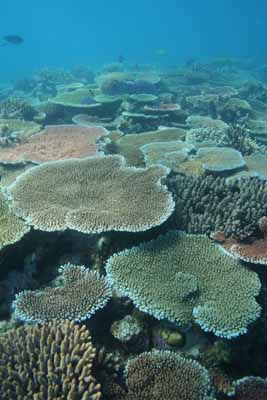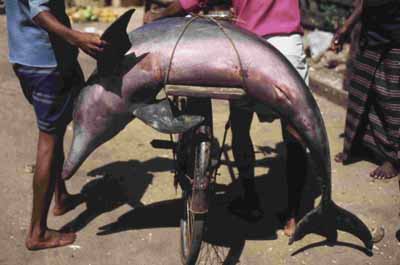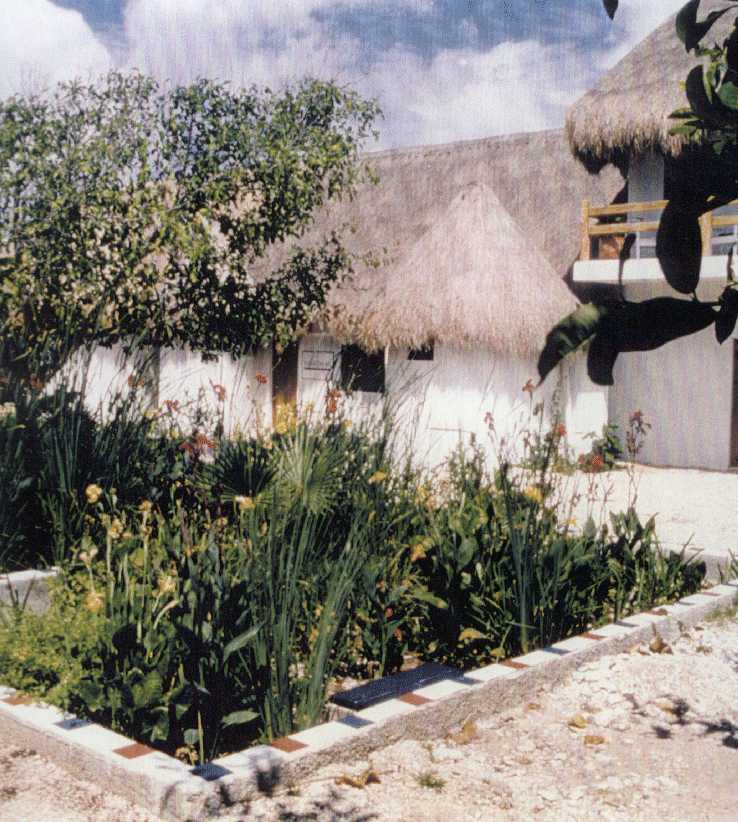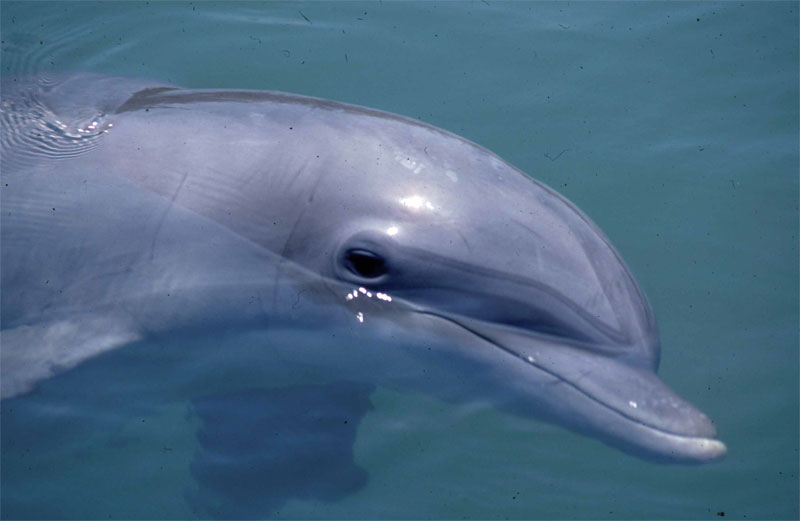| |
Scientific
Papers, Articles & Documentaries
 Scientific Papers Scientific Papers
Documentaries
Articles
Scientific Papers:
Coral Reef Research
Katie Olds, Phil Dustan, Abigail Alling. 2008.
Eight years of coral reef data from Melanesia and Southeast
Asia: Vitality, percent cover, reef cover and effects of earthquake.
Poster prepared for the International Coral Reef Symposium, Florida.
View Poster.
Tanya Ribakoff, Orla Doherty, Paul McCurdy, Kitty Currier, Abigail
Alling.
2008.
Declining Coral Health and Fish Diversity in the Solomon Islands,
Melanesia Before and After 2007 Tsunami and Earthquake.
Paper and poster prepared for the International Coral Reef Symposium,
Florida. View Poster
Lindsey Feldman,
Abigail Alling,
Katharine Currier, Orla Doherty, Phil Dustan,
Heather Logan, Carol Milner. 2008. The
Planetary Coral Reef Foundation: An Overview.
Poster prepared for the International Coral Reef Symposium, Florida.
View Poster
Abigail Alling, Katharine Currier, Orla Doherty,
Sylvia Kowalewsky, Mark Van Thillo. 2008.
Offshore Sea Turtle Sightings in Melanesia and
Australia, June 2005 to July 2006.
Presented at the International Sea Turtle Symposium, Baja.
View
Poster
Alling. A., Doherty, O., Logan, H., Feldman, L.,
Dustan, P. 2006.
Catastrophic Coral Mortality in the Remote
Central Pacific Ocean: Kirabati Phoenix Islands. Atoll Research
Bulletin (in press).View
Publication
Paul McCurdy, Abigail Alling, Orla Doherty, Jim Whetterer, and John
Moore. Declining Coral Health and Fish Diversity in the South
Pacific. Poster presented at the Harriet L. Wilkes Honors
College Symposium. 2007.
View
Poster
Agardy, Tundi. 2004.
America's Coral Reefs: Awash with Problems. Issues in Science and
Technology. Volume XX Number 2. pp. 35-42.
View Paper
Schuyler, Q, Dustan, P. and E. Dobson.
2004. Remote Sensing of Coral Reef Community Change on a Remote Coral
Atoll: Karang Kapota, Indonesia. 10th International Coral Reef
Symposium.
View
Paper
Dustan, P., Dobson, E. and
Nelson, G. Thematic
Mapper: Detection of shifts in community composition of coral reefs. Conservation Biology,
2001
Abstract
Lubin, D., Li, W., Dustan,
P., Mazel, C.H., Stamnes, K.
Spectral
Signatures of Coral Reefs: Features from Space.
published: Remote Sensing of
Environment, 2001, 75: 127-137
Abstract
Supriya, C., Baumgardner, J., Alling, A., Dustan, P. Sensor Specifications
for Space Based Coral Reef Monitoring. presented: at Linnean Society/NASA/PCRF Remote
Sensing of Coral Reefs Conference, London, Dec 15-16, 1999.
Dustan, P., S. Chakrabarti, A. Alling.
Mapping and Monitoring
the Health and Vitality of Coral Reefs From Satellite: a Biospheric Approach.
published: J. Life Support and Biosphere
Science, 1998, Vol 7: 149-159.
To view the publication:
Abigail Alling, John Allen, Mark Van Thillo, Dr. Phil Dustan, Christine
Handte, and Qamar Schuyler.
Observations of the Biosphere 2 coral
reef and natural coral reefs which illustrate the need to implement remote
sensing technology for coral reefs worldwide. submitted to: International
Journal of Remote Sensing 2000
Meyers, M., Hardy, J., Mazel,
C. and Dustan, P.
Optical
Spectra and Pigmentation of Caribbean Reef Corals and Macroalgae
Coral Refs, 1999, 18: 179-186.
View
Abstract
Alling, A. and P. Dustan. Coral Reef Ecosystem of Biosphere 2.
presented: at Linnean Society Presentation, 4th International Conference on Biospherics
and Closed Ecological Systems, April, 1996.
Dustan, P.
Developing Methods for Assessing
Coral Reef Vitality: A tale of Two Scales.
Global Aspects of Coral Reefs, June 10-11,
1993, University of Miami, pp M8-M14
Whales and Dolphins
Alling, A. 2006. Silent Death.
Ocean Magazine. April
2006.
To view a pdf file of the
article.

A bottlenose dolphin on the back of a bicycle
in Sri Lanka - the dolphin was
captured in the Sri Lanka driftnet fishery as a by-catch.
Baker, C.S., A. Perry, J.L. Bannister, M.T. Weinrich, R.B. Abernethy,
J. Calambokidis, J. Lien, R.H. Lambertsen, J. Urban Ramirez, O. Vasquez,
P.J. Clapham, A. Alling, S.J. O'Brien, S.R. Palumbi.
1993.
Abundant
Mitochondrial DNA Variation and Worldwide Population Structure in
Humpback Whales. Proceedings of the National Academy of Sciences of
the United States of America. Vol 90. No. 17: 8239-8243.
To view
publication:
C.S. Baker, R. Slade, J. Bannister, G. Abernethy, A. Alling, and G.K.
Chambers. 1992.
Genetic Variability and Stock Identity of Humpback
Whales. Submitted to the International Whaling Commission.
Alling, A., E. Dorsey, J. Gordon. 1991.
Blue Whales (Balaenoptera
musculus) off the Northeast Coast of Sri Lanka: Distribution, Feeding
and Individual Identification. In: Cetaceans and Cetacean Research
in the Indian Ocean Sanctuary. 1991. S. Leatherwood and G.
Donovan.Marine Mammal Technical Report Number 3, United Nations
Environment Programme, Nairobi, Kenya. pp. 247-258
Alling, A. and R. Payne.
1987.
Song of the Indian Ocean Blue Whale, Balaenoptera musculus. Presented to the scientific meeting of the review of the Indian Ocean Marine Mammal Sanctuary, Seychelles, 1987.
To View Paper
Alling, A. and H. Whitehead. 1987.
A preliminary study of
the status of the White-beaked dolphin and other small cetaceans off the
coast of Labrador.
Canadian Field Naturalist Vol 101(2):
131-135.
Alling, A. 1987.
A Preliminary Report of the Incidential Entrapment of
Odontocetes By Sri Lanka's Coastal Drift Net Fishery. J. Bombay Nat. Hist. Soc
85(3): 538-550.
To view a pdf file of the
article.
Gordon, J., V. Papastavrou, and A. Alling.
1986.
Measuring
blue whales: a photographic technique.
Cetus, 6(2): 5-8.
Alling, A. 1986.
Records of Odontocetes in the Northern Indian Ocean
(1981-1982) and Off the Coast of Sri Lanka (1982-1984). J. Bombay
Nat. Hist. Soc. 83(2): 376-394.
To view a pdf file of the
article.
Alling, A. 1985.
Blue whales and remoras: a commensal
or mutual interaction? J. American Cetacean Soc., 19(1): 16-19.
Alling, A., Gordon, J., Rotten, N. & Whithead,
H. (1982). WWF-Netherlands Indian Ocean Sperm Whale Study, 1981-1982.
Interim Report. Paper SC/34/Sp9 presented to the IWC Scientific
Committee, June 1982 (unpublished). 46pp.
Whitehead, H., K. Chu, P. Harcourt, and A. Alling. 1982.
The humpback
whales off West Greenland: summer 1981. Final Report to Marine
Mammal Commission. N.T.I.S. Publication no. PB82-243924, pp 25.
Wastewater Gardens�
Nelson, M., Alling, A, Dempster, W.F., Van Thillo, M. and J.
Allen. 2002.
Integration of wetland wastewater treatment with
space life support systems.
Life Support and Biosphere Science
8 (3/4):149-154.
To view Publication:
Nelson, M., Alling, A, Dempster, W.F., Van Thillo,
M. and J. Allen. 2003.
Advantages of using subsurface flow constructed wetlands for wastewater
treatment in space applications: ground-based Mars Base prototype.
Advances in Space Research 31 (7): 1799-804.
To view publication:

Nelson, M., Odum, H.T., Brown, M.T., and A.
Alling. 2001.
Living off the land: resource efficiency of wetland
wastewater treatment. Adv. Space Res. 27 (9) 1547-1556.
To view publication:
Nelson. M. Wetland Systems for Bioregenertive Reclamation of Wastewater
- From Closed Systems to Developing Countries.
presented: at 3rd International conference
of Life Support and Biosphere Science, January 11 -15, Disney, Coronado,
Florida. Life Support and Biosphere Science. Vol 5 pp. 357-369, 1998.
Nelson. M. Conceptual Design of Zero Discharge and Safe Discharge
Biological Wastewater Treatment Systems Using Fast-Growing Wetland Trees. published:
Master of Science Thesis, University of Arizona. 1995.
Documentaries:
An Inconvenient Truth. 2006. Academy
award winning film by Paramount Classics and Participant Productions.
2006 that featured the work of PCRF and the fact that coral reefs are an
early warning sign for global warming.
Dragon of the Seas. 2004. 52 minute documentary film about the Planetary
Coral Reef Foundation's Coral Reef Research program by ADR
Productions, France.
Indonesia Beyond the Reefs.
1999. National
Geographic Television about Raffles Marina Marine Parks of Indonesia
expedition with PCRF.
The Coral Dance. 1998. 30 minute documentary film on the Planetary Coral
Reef Foundation Coral Reef Research and Wastewater Gardens
by Japan Asahi TV, French Canal + TV, and British 3BM Production.
Back to the Sea. 1987. National Geographic film about the release of two
bottlenose dolphins, Joe and Rosie.

"Joe"
Articles:
Raffles Marina, Nautique articles: 2006 - 2008
Ryan Allen. 2004 Reef Soldiers and the King of Hollywood. Sports Diver,
April 2004. View Article
Jenine Warner. 2002. Coral Reef Foundation Looks Towards the Heavens to
Understand the Sea. Miami Herald. View
Article.
Ryan Lee. 2001. A Little Wind in the Hair Helps Save
the Reefs. Skin Diver, September 2001.
Cynthia Lazaroff. 2001. Did You Know All This?
In Touch (Fall, 2001).
Kimberley Kraft. 2001. Pirates
Ahoy! Nautique, Raffles Marina Magazine (September 2001).
Jim Cameron. 2001. Celebrities Set Sail for the Coral Reef Foundation.
Ecolonomics In Action. July/August, 2001.
Ian Francis. 2001. Voyages of Discovery. The Lancet, Vol 257, June 9, 2001.
Kim Lee. 2001. Odyssey: Planet Ocean. Nautique - Raffles Marina Magazine (May
2001).
Nelson, M. and Alling, A. 2000. Wastewater Gardens: Ecotechnic Approach
for Recycling Valuable Resources, Preventing Pollution of Water and the
Environment. Green Globe News, Issue No. 4, September, 2000.
Djuna, I. 2000. Ancient Voyage, Modern Research. http://www.enn.com/enn-features-archive/2000/05/05282000/heraclitis_10632.asp
Seward, Pat. 2000. Marine Parks of Indonesia Sails On: Bitung to Bali.
Asia Marine February/March 2000: 48-59
Djuna, I. 2000. Wastewater Gardens. http://www.enn.com/enn-features-archive/2000/05/05292000/wastewatergarden_11024.asp
Seward, Pat. 2000. The End of the Odyssey, Bali to Singapore. Boat Asia
International. Vol 1, No 1/May: 44-52
Schmidt, Alison. 2000. And They're Off, The Aseanarean Expedition Goes
Indonesian. Asia Marine, December/January, 2000:46-57
Seward, Pat. 1999. Aseanarean Ahoy!. Asian Marine, April/May, 1999:
48 - 54.
Jonathan Webster. 1999. Aseanarean Expedition Series Heads to Indonesia,
National Geographic On Board!. Asian Marine Magazine. June/July, 1999.
Mark Nelson and Robyn Tredwell. 1999. "Wastewater Gardens: Ecotechnic
approach for recycling valuable resources, while preventing pollution of
water and environment." Rural Health Alliance Magazine, Invited Article.
Heraclitus and the PCRF. Raffles Marina July 1999 Issue. Singapore.
Time to dive and make waves. Straits Times. May 22, 1999
Marine Expedition Planned. Straits Times. May 20, 1999 ·
Sachiko Uozumi. 1999. Design Vision.Tresco Magazine.
Coral Doctor is Here for Check-up. Northern Territory News. April 20,
1998.
Tim Friend. 1998. Water Treatment for a Healthy Planet. USA TODAY. January
20, 1998.
Tim Friend. 1998. Mission to Map Threatened Reefs. USA TODAY. January
20, 1998
Tim Friend. 1998. Satellite Pictures Could Chart Changes. USA TODAY.
January 20, 1998
Sachiko Uozumi. 1998. Sustainable Design. Nikkei Design. March, 1998.
Mapping the Worlds Reefs. 1998. Latitude 38. March, 1998
Constructed Wetlands Provide Water Treatment for Developping Countries.
US Water News. April, 1998
Hahn. R. 1997. RV Heraclitus: Ship of Discovery. Explorers Journal.
Fall, 1997.
Alling, A. 1997. Pulsing Planet Earth: The Planetary Coral Reef Project.
Explorers Journal. Fall, 1997.
Steve La Rue. 1997. Reef Havoc. San Diego Union Tribune Quest. July
9, 1997
Steve La Rue. 1997. Corals Hold Undiscovered Potential. San Diego Union
Tribune Quest. July 9, 1997
Research Ship Arrives. Daily Nation. Nairobi, Kenya. March 26, 1997.
Tapping the Reefs for Knowledge. Seychelle Weekend Nation. Vol. XII
No. 6. Feb 6, 1997
Study of Seychelles' Reefs to Further World Knowledge. Seychelles Nation.
Vol XX No 25. Feb. 6, 1997.
International Coral Detectives. Oman Today. September, 1996.
Celebrating the Sea with Rhythm and Blues. Times of Oman. June 29, 1996.
Bid to Avert Worldwide Threat to Coral Reefs. Oman Daily Observer. 1996.
Port of Call: Jordan. Jordan Times, January 11, 1996.
Planetary Coral Reef Foundation Establece Estacion de Campo en Akumal,
Mexico. CEA EcoNews. Issue 1. Fall, 1996.
Cinco Anos a Navegar Numa Jangada Chinesa. Revista Diario, Portugal.
July 2, 1995
Jangada Chinesa Inicia Expedicao na Maderia. Trafego Maritimo. June
5, 1995.
Festival Gente do Mar na Fortaleza de S. Tiago. Diario de Noticias.
.July 11, 1995
Dream Voyage for Kenyan Woman. New African Life. June, 1995
Alling, A. 1989. "Braving the Antarctic on a Chinese Junk." Geomundo,
Mexico
Remote
sensing and Coral Reef Ecology: A reality check.
Schuyler, Q.
and Dustan, P.
submitted to:
Asian Journal of Geoinformatics, 2003
Abstract: Coral
reefs provide numerous benefits, including shoreline protection, high
species diversity, and a source of protein for much of the world's
population. However, multiple anthropogenic stresses threaten coral
reefs and those who depend on them. It is therefore important to
develop methods to study reefs on a global scale. Analyzing
satellite imagery offers a relatively low-cost alternative to traditional
field studies, but most analysis techniques currently being used require
ground-truthing expeditions to ensure accuracy. Through our work on
Karang Kapota atoll, in Indonesia, we investigate the utility of temporal
texture as a preliminary diagnostic tool. In the absence of field
verification, it may be able to alert managers to potential problems on
even the most remote reefs.
Spectral
Signatures of Coral Reefs: Features from Space
Lubin, D., Li, W., Dustan,
P., Mazel, C.H., Stamnes, K.
published: Remote Sensing of
Environment, 2001, 75: 127-137
Abstract:
The spectral signatures of coral reefs and related
scenes, as they would be measured above the Earth's atmosphere, are
calculated using a coupled atmosphere-ocean discrete ordinates radiative
transfer model. Actual measured reflectance spectra from field work are
used as input data. Four coral species are considered, to survey the
natural range of coral reflectance: Montastrea cavernosa,
Acropora palmata, Dichocoenia stokesii, and Siderastrea
siderea. Four noncoral objects associated with reefs are also
considered: sand, coralline algae, green macroalgae, and algal turf. The
reflectance spectra as would be measured at the top of the atmosphere are
substantially different from the in situ spectra, due to
differential attenuation by the water column and, most importantly, by
atmospheric Rayleigh scattering. The result is that many of the spectral
features that can be used to distinguish coral species from their
surroundings or from one another, which have been used successfully with
surface or aircraft data, would be obscured in spectral measurements from
a spacecraft. However, above the atmosphere, the radiance contrasts
between most coral species and most brighter noncoral objects remain
noticeable for water column depths up to 20 m. Over many spectral
intervals, the reflectance from dark coral under shallow water is smaller
than that of deep water. The maximum top-of-atmosphere radiances, and
maximum contrasts between scene types, occur between 400 nm and 600 nm.
This study supports the conclusions of recent satellite reef mapping
exercises, suggesting that coral reef identification should be feasible
using satellite remote sensing, but that detailed reef mapping (e.g.,
species identification) may be more difficult.
"Living off
the land": resource efficiency of wetland wastewater treatment
Nelson, M., Odum, H.T., Brown, M.T., and A. Alling.
invited
paper presented: at COSPAR conference, Warsaw, Poland, July, 2001, in press,
Advances in Space Research.
Abstract:
Bioregenerative life support
technologies for space application are advantageous if they can be
constructed using locally available materials, and rely on renewable
energy resources, lessening the need for launch and resupply of materials.
These same characteristics are desirable in the global Earth environment
because such technologies are more affordable by developing countries, and
are more sustainable long-term since they utilize less non-renewable,
imported resources. Subsurface flow wetlands (wastewater gardens(TM)) were
developed and evaluated for wastewater recycling along the coast of
Yucatan. Emergy evaluations, a measure of the environmental and human
economic resource utilization, showed that compared to conventional sewage
treatment, wetland wastewater treatment systems use far less imported and
purchased materials. Wetland systems are also less energy-dependent,
lessening dependence on electrical infrastructure, and require simpler
maintenance since the system largely relies on the ecological action of
microbes and plants for their efficacy. Detailed emergy evaluations showed
that wetland systems use only about 15% the purchased emergy of
conventional sewage systems, and that renewable resources contribute 60%
of total emergy used (excluding the sewage itself) compared to less than
1% use of renewable resources in the high-tech systems. Applied on a
larger scale for development in third world countries, wetland systems
would require the electrical energy of conventional sewage treatment
(package plants), and save of total capital and operating expenses over a
20-year timeframe. In addition, there are numerous secondary benefits from
wetland systems including fiber/fodder/food from the wetland plants,
creation of ecosystems of high biodiversity with animal habitat value, and
aesthestic/landscape enhancement of the community. Wetland wastewater
treatment is an exemplar of ecological engineering in that it creates an
interface ecosystem to handle byproducts of the human economy, maximizing
performance of the both the natural economy and natural ecosystems.
Wetland systems accomplish this with far greater resource economy than
other sewage treatment approaches, and thus offer benefits for both space
and Earth applications.
|
\ |










